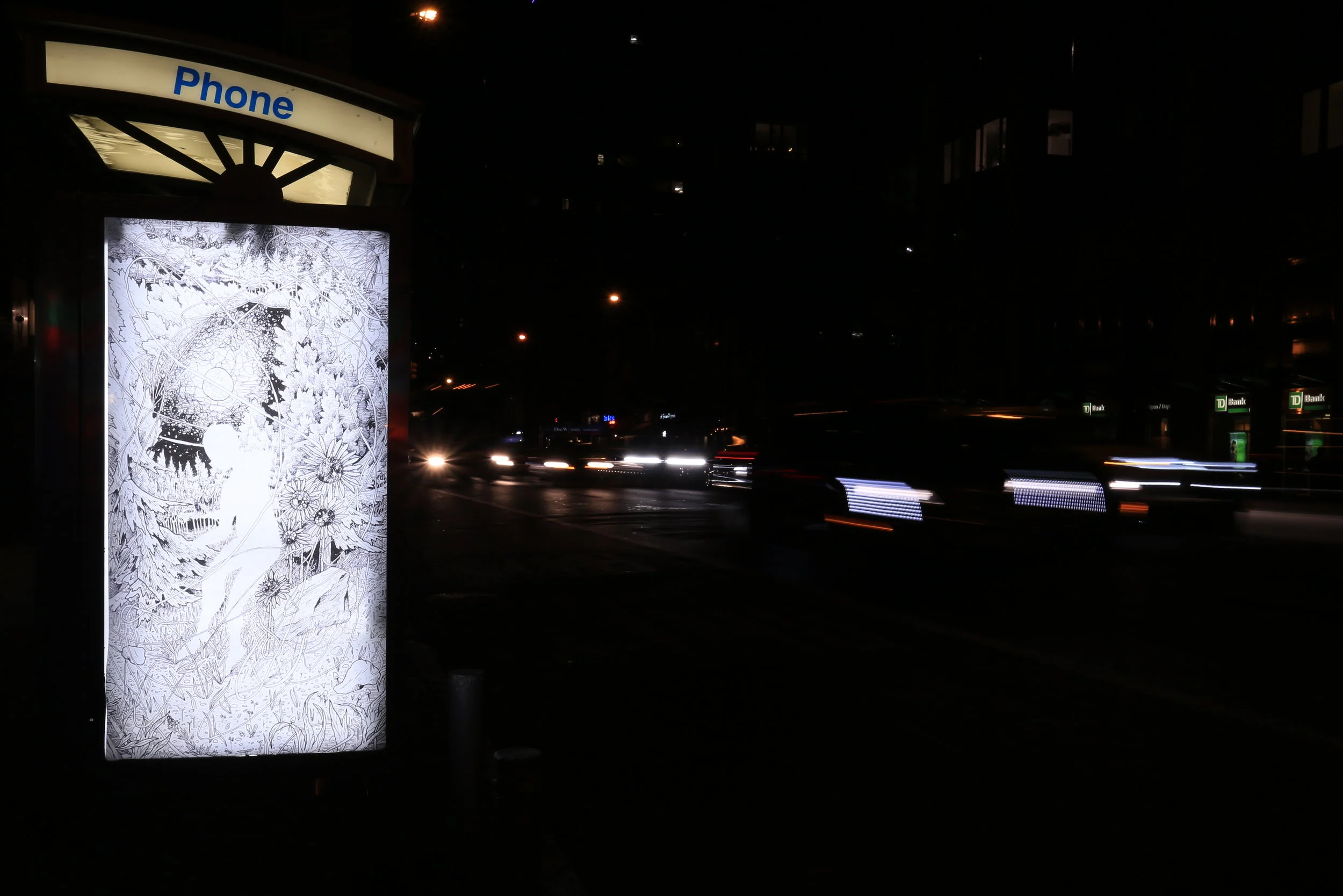Colleen Tighe. Photo by Luna Park.
Back around February, we did our usual thing of reaching out to some of our favorite artists to see who might want to contribute a poster to Art in Ad Places. We got some great submissions. Then, the world changed. We #stayhome-ed. We went on hiatus.
Kristine Virsis. Photo by Luna Park.
Finally, while still quite cautious about the pandemic, we decided that we could once again be out on the streets creating the art-filled world that we wish to see every day. And so four works that were meant to go up in March are finally on the streets of New York City.
Zebu. Photo by Luna Park.
There is Zebu, the German duo whose work has only gotten more relevant in recent months and who told us:
We participated in the Art In Ad Places project because we think it is important to make public statements to embrace diversity in all societies. With the rise of right wing politicians and political parties world wide, it seems to become more and more acceptable to express racist and sexist opinions. We should use conversations to make clear that this is NOT OKAY. Art in public spaces can help to start these discussions. Diversity matters. Stop the hate.
You can find their work at (we think) the closest payphone to Ellis Island and the Statue of Liberty.
There is Kristine Virvis, whose work is a friendly reminder of the world outside of the city and who told us:
Art is my absolute favorite form of human communication. The connection that happens in the moment I look at an artwork and feel in my whole body, "yes, I understand this, I have felt this, this moment, this conflict, this joy, this un-namable thing," is when I feel the most connected as a human, the most un-alone. It's sad that so much of the creative expression we take in is intended to sell us things. For me, this is a chance to reclaim one of those spaces and to spread artwork in an accessible context. When I made this piece, I was feeling a lot about death and grief, nature and protection. This is my grandmother's dog Pasha, nestled into some sweet grasses, poisonous flowers, and sleeping hummingbirds. The imagery at the top is based on the flower crowns my family in Latvia wore on summer solstice, which represent a deep connectivity to nature and themes of protection.
And then there is Colleen Tighe, who contributed two posters. We always try to be conscientious of how we walk the line between art and marketing (in order to critique advertising), so her thoughts capture some ideas that we always have on our minds:
Advertising steals the aesthetics of political art movements to sell the aesthetic of our movements back to us. I want to reclaim in a small way using art and design not to sell anything, but to make political, people centered demands. I wanted to be a part of Art in Ad Places in order to put those demands in a place where normally advertisers are demanding us to spend money.
It’s fascinating to install these works so many months after we had hoped to. In some ways, the world feels completely different. And yet, all of this work still feels vital. We still need a connection with nature. We still need labor power and to tear down borders. We still need to embrace diversity. We still need to reclaim public space for people.
Colleen Tighe. Photo by Luna Park.















